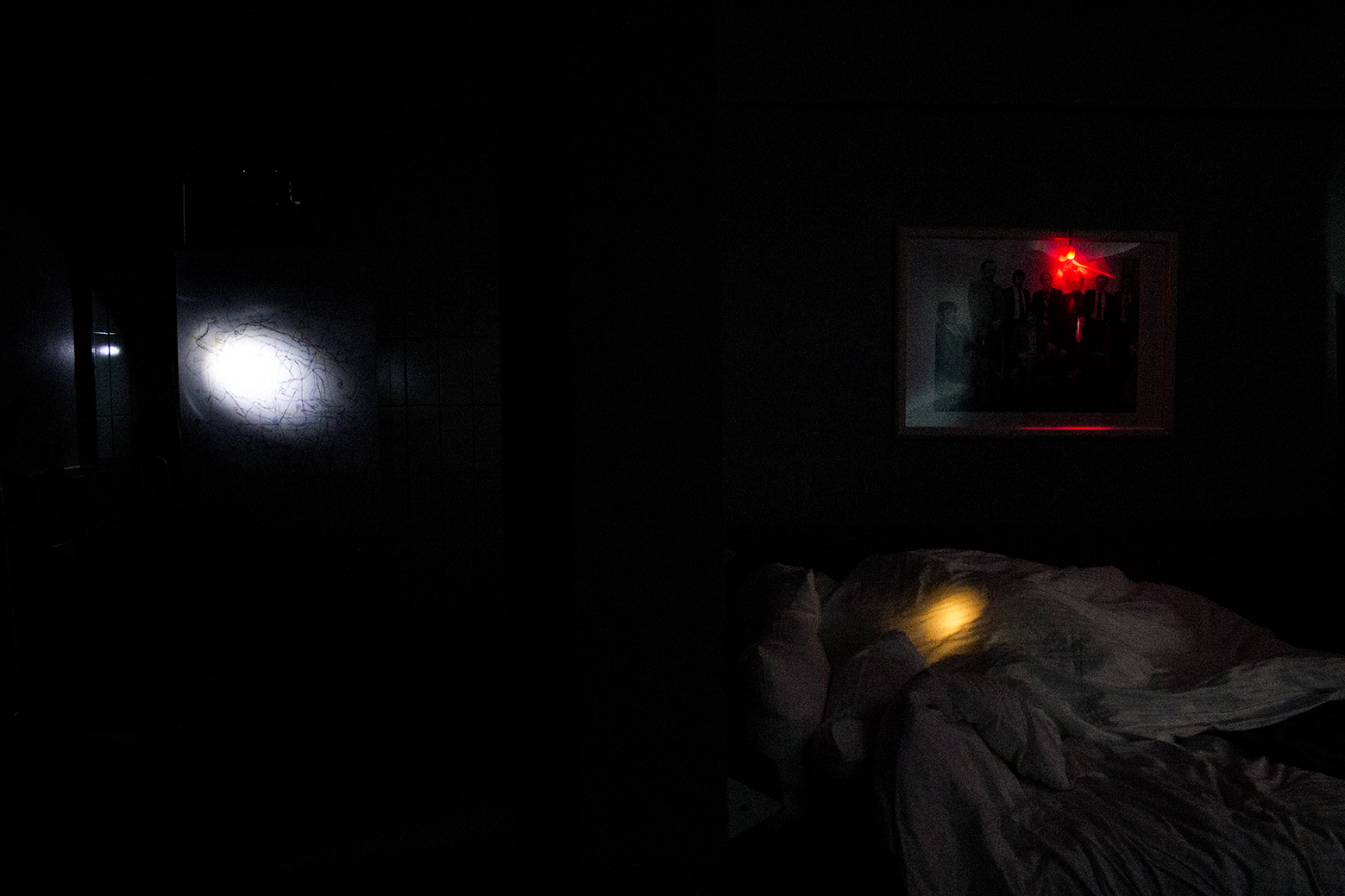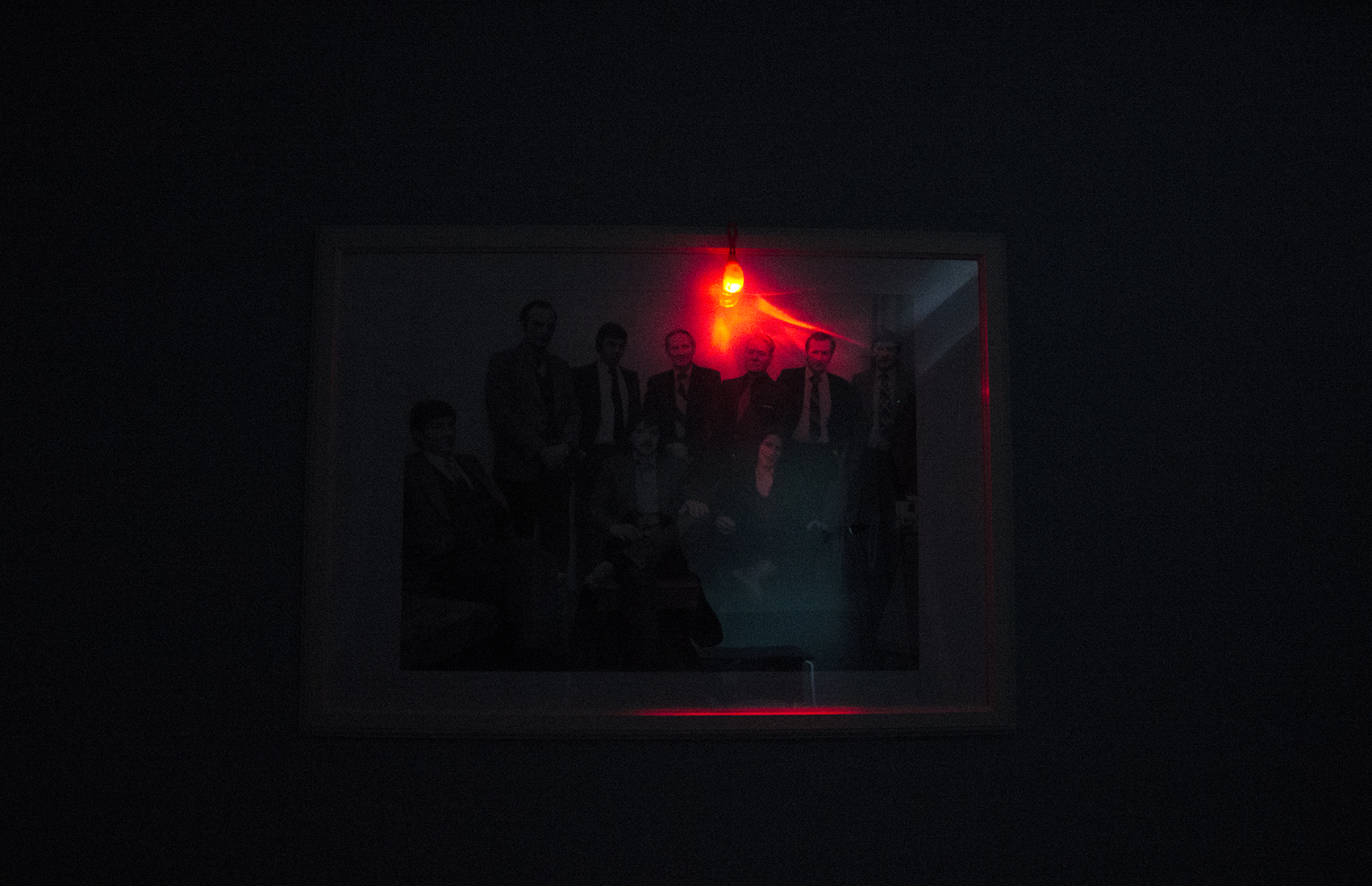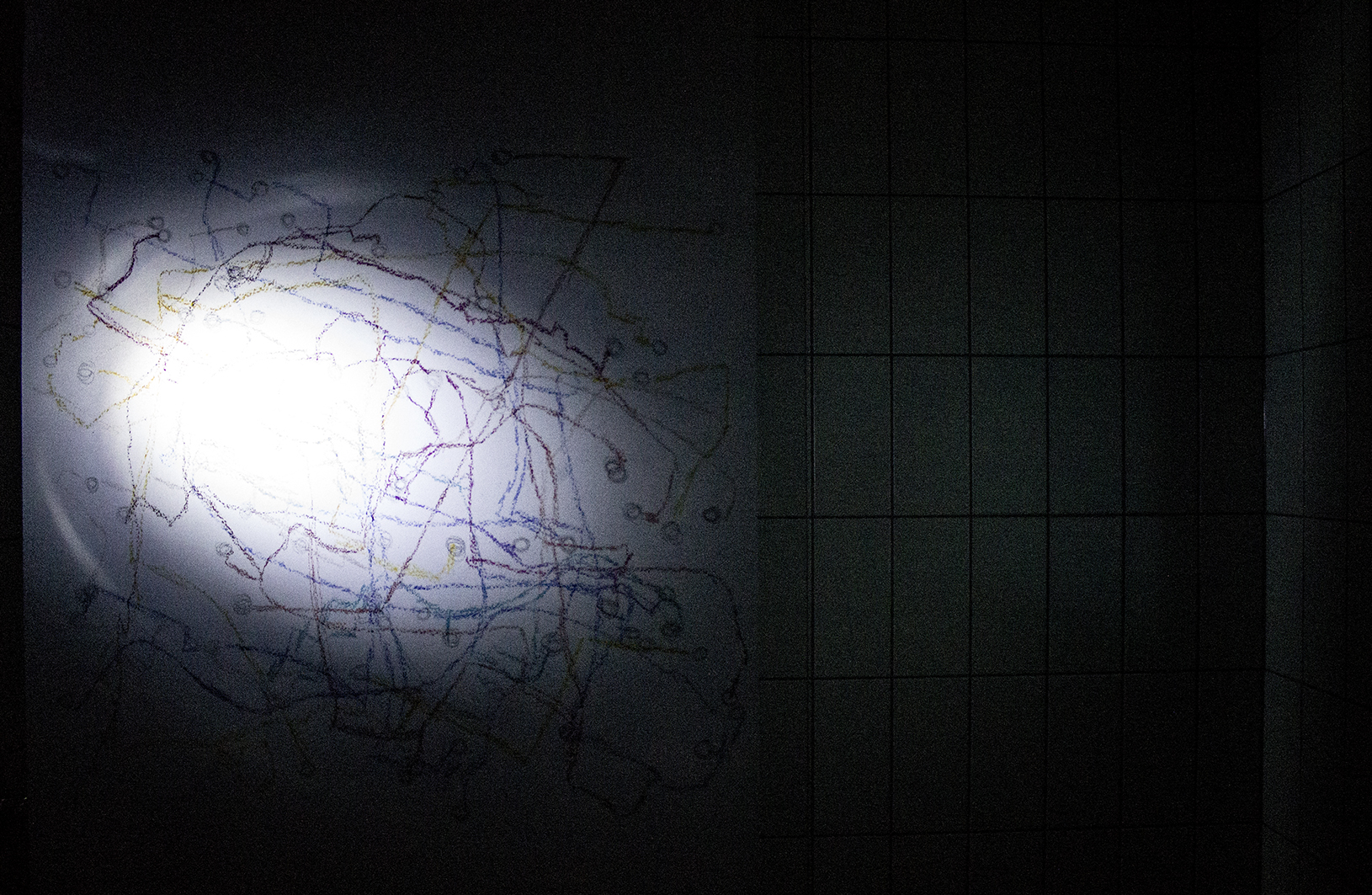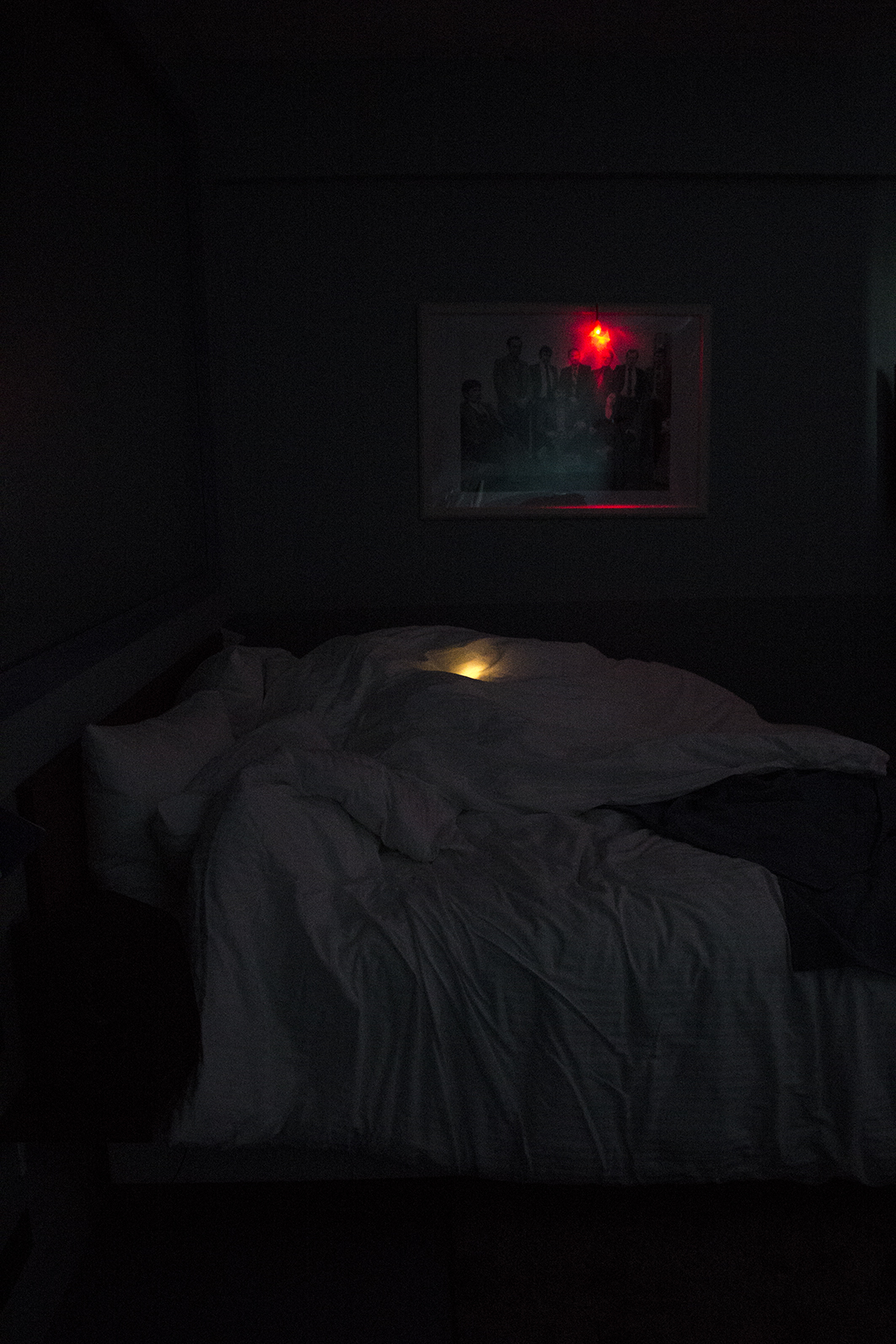Þrjú tonn af sandi / Return to sender
Þrjú tonn af sandi / Return to Sender (Three Tons of Sand / Return to Sender) was a sequence of momentary exhibitions, initiated by Bryndís Björnsdóttir, Snorri Páll and Steinunn Gunnlaugsdóttir, which took place on November 19th 2016 in room number 425 at the recently opened Oddsson Hotel in Reykjavík. Each artist presented a solo exhibition for an hour.
Bryndís Björnsdóttir – Landráð I
Landráð I is the first part of Bryndís Björnsdóttir artistic research series which deconstructs the word treason into the dialect of belonging and betrayal. During the settlement of Iceland, women had to mark their land by walking from sunrise to sunset on a spring day with a two year old cow while men should not travel farther than he could with an open fire along with his shipping mates. In the council of land presented at Oddson Hotel, a decadent version of the Mountain Woman of Iceland was present which addressed the settlement of Iceland while decolonizing the female body. The Mountain Woman performs an act of settlement on the former NATO base in Iceland, which until recently was fenced off due to the risk of unexploded bomb fractions.
Snorri Páll Jónsson – SVIÐSETHNIC [PDF]
An installation consisting of a photograph, drawing, audio, performance and lightning.
Snorri Páll's semi-theatrical installation, SVIÐSETHNIC (STAGETHNIC), is based on fictitious-like court documents from Iceland's most famous and infamous criminal case, in which six individuals were imprisoned after being forced to confess to murdering two men who seemingly melted into air on two separate occasions in 1974.
Following two years of isolation in a tiny prison cell, systematic psychic and corporeal torture, relentless threats and cutthroat attempts to absolute memory-distortion, a prisoner is finally granted access to paper and writing utensils — at which point he starts reminiscing his whereabouts and manoeuvres the days surrounding a crime to which he has been forced to confess. A single particularly memorable scenario quickly turns into a memoric pivot, from which the prisoner gradually travels in two opposite directions, resulting in a detailed and colorful mapping of people, places and continuous motion — a tomographic image of a time gone — a photoflash from a stolen past.
Photograph: The Reykjavík Chief of Police
Words: Sævar Marinó Ciesielski
Manipulation and performance: Snorri Páll
Steinunn Gunnlaugsdóttir - Cell [PDF]
An installation and a found photograph printed on glass, exhibited in room number 425 at the Oddsson Hotel in Reykjavík. The photograph – showing the interior of a tiny cell – accompanied a 2016 article, published in the Icelandic daily Morgunblaðið, concerning the future of an old stone house situated in the city center of Reykjavik. The article discusses a dossier by a working group commissioned by the Ministry of the Interior to examine what kind of businesses could – and, of no less importance, should not – be housed in the building following the halt of its heretofore function.
From the day its doors first opened (only to be immediately shut and locked thereupon) until early summer 2016 – a period of 142 years – the house served as a prison, simultaneously housing a court room and a city council meeting hall for a shorter period of time. Most commonly referred to as the Rock, due to its characteristic construction material – or else the Nine, owing to its street address – the house was, in fact, Iceland's only purpose-built penitentiary up until the 2016 opening of a new prison, located at the Hólmsheiði plateau outside Reykjavík, whereto the Rock's overall operations were transferred.
Underneath the photograph from the old prison sais: Cell – Artistic activities could be practiced there.
The work deales with the tourist industry, gentrification, housing crises, art, transformations and imprisonment.
Steinunn Gunnlaugsdóttir – Klefi [PDF]
Ljósmynd prentuð á gler og innsetning. Sýnt í hótelherbergi númer 425 á Oddsson Hótel í Reykjavík. Ljósmyndin er fundið verk úr umfjöllun Morgunblaðsins um framtíð Níunnar, steinhlaðna hússins á Skólavörðustíg 9. Í umfjölluninni er farið yfir tillögur opinbers starfshóps um hverskonar starfsemi væri ráðlegt – og ekki – að stunda í húsinu. Allt frá byggingu hússins og fram til sumarsins 2016, eða í 142 ár, hafði húsið verið brúkað sem fangelsi, tukthús, fangageymsla, hegningarhús, steinn, prísund, dýflissa, myrkvastofa, svarthol. Þeirri starfsemi er nú lokið í húsinu og var hún færð út úr borginni, í nýtt fangelsi upp á Hólmsheiði.
Á ljósmyndinni sést inn í fangaklefa í gamla fangelsinu og undir henni stendur: Klefi – Þar gæti verið liststarfsemi
Í Reykjavík, líkt og víða annarstaðar í heiminum, hefur leiguverð rokið upp og almenn húsnæðisekla ríkir. Hús sem áður voru fyrir íbúa eru nú gistiheimili, veitingastaðir eða leigð til ferðmanna í gegnum AirB&Bb. Í stað þess að húsnæði séu byggð fyrir íbúa borgarinnar rísa ný hótel fyrir ferðamenn. Verkið snertir á ferðamannaiðnaðinum, umbreytingu rýma, húnsæðiseklu, stöðu listamanna og listar, fangelsun og lágaðalsvæðingu.








